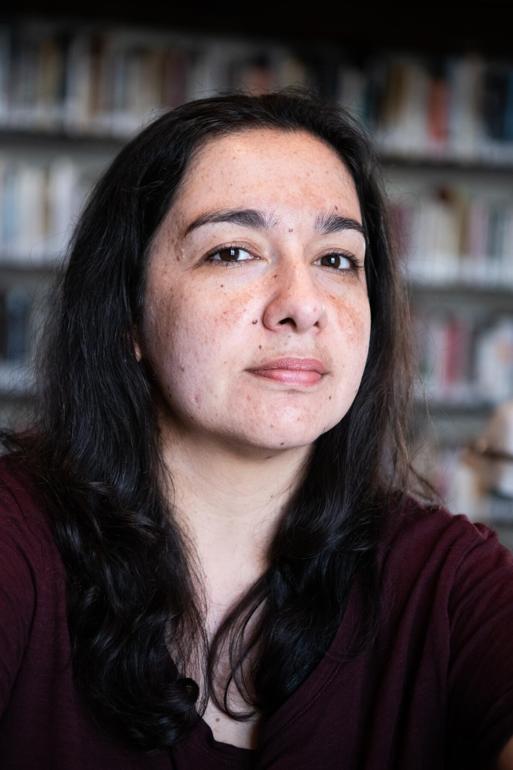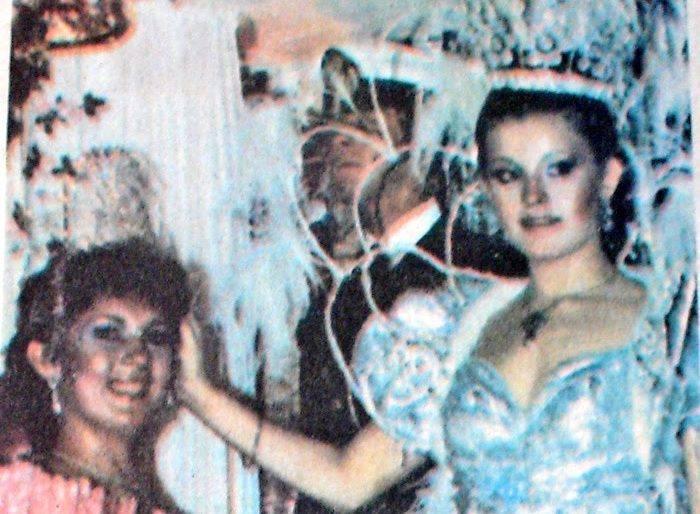
Melchor
*
Español
November 17, 2024
by Philip Gambone
The young journalist and novelist Fernanda Melchor has been acclaimed as one of the finest Mexican writers of her generation. She has won the PEN Mexico Award for Literary and Journalistic Excellence, the International Literature Award, the Anna Seghers Prize, and the Ryszard Kapuścińki Award. The English translation of her novel Páradais was shortlisted for the LA Times Book Prize.
Melchor's "thematic repertoire," writes Mabel Moraña in Three Mexican Writers
in the Twenty-First Century, includes social decline, the collapse of the traditional family, marginality, and the vulnerability of youth. Her writing bears witness to a "culture of violence that exceeds the parameters of the human condition, civilization, self-respect, and respect for others." Melchor's style has been compared to the Mexican baroque because of her exuberant use of language, superabundance of details, and interest in the grotesque. She has, says Argentinian author Samanta Schweblin, "the voice of someone who writes with rage and has the skill to pull it off."
Born in 1982 in Veracruz, Fernanda Melchor arrived on the scene with her first book Aquí no es Miami (This Is Not Miami), published in 2013. A collection of her literary journalism, the book looks squarely and unflinchingly at the broken social fabric of her hometown. Melchor knows dysfunction firsthand. As a child, she was left alone by a mother who had disappeared up north and a father who was "on one long bender ever since." She had to "get a job just to be able to eat and put myself through school."

Veracruz waterfront
*
In the book's relatos or crónicas, Melchor attempts to tell stories "in what I regard as the most honest way possible." Most were written between 2002 and 2011, the majority published in the online cultural magazine Replicante. Her pieces straddle the line between journalism and realist fiction, though in essence they are neither.
All of these relatos take place in Veracruz, the so-called First Port of Mexico. It is, she writes, a city characterized by "ungovernability," "top-level corruption," and "machete law." At the heart of these texts, the incidents themselves are not as important as "the impact they had on their witnesses." Her intention is "always to tell a story with the maximum amount of detail and the minimum amount of noise." By noise, I take it she means sensationalism. Instead, she delivers each story with blunt directness. One critic has called her method "dirty realism."
The title story, set in the early nineties, concerns the wave of UFO sightings that captured the imaginations of Mexicans at the time. As it turned out, the alien spaceship that Melchor saw over Dead Man's Beach was, in fact, a plane piloted by narcos carrying stashes of Columbian cocaine. In this way, she introduces one of the major themes of the book: what she, in another relato, calls "the unmistakable and irresistible whiff of clandestine activity" in Veracruz.

Ignacio Allende Prison
*
One of the most remarkable aspects of the book is Melchor's uncanny ability, coupled with remarkable bravery, to interview so many of the marginal inhabitants of Veracruz's demimonde. Although she encounters plenty of people who are suspicious of talking to a reporter, and who think journalists are really "like vultures circling misfortune," nevertheless, she has managed to get a lot of people to talk to her.
We meet El Ojón ("Bug Eye"), a day laborer or cuije, who is an expert at stealing long fillets of Norwegian stockfish; Paco, another dock worker, who helps some Dominican refugees hiding from the police. One of them tells Paco, "You don't know what it's like to watch your father being hacked to death with a machete, to watch your mother being raped." And El Gordo, a musician, who has written a ballad about the "burned man of Tatahuicapa," a cattle thief, rapist, and marijuana fiend, who was lynched, tortured, and burned alive by a vigilante mob. "I was angry that this person had committed other crimes and kept being released from jail," one townsperson tells Melchor.
The cavalcade of bad guys continues: Pancho Pantera, a legendary thief, famed for cheating the local mob; El Pollero, or Chicken Man, who dreams of becoming a narco and getting out of poverty; Lázaro Llinas, the "King of the Downers." He's been arrested several times, but his money and connections among state and federal authorities always saves his skin.
Another hoodlum is El Fito, with his colossal gut scored with fat, raised knife scars, and a thuggish, menacing expression, who works for "the company," scraping bricks of cocaine to be sold in two-gram bags at 24-hour convenience stores. "Pity the worker whose batch was short by a single gram: that thief would have his ass whipped with a sixty-centimeter wooden cane, which was passed from goon to goon so no one got tired."
There's Ángel del Mal, an "authorized" drug dealer, who tells one of his buyers that immunity from the police is included in the price of a gram of cocaine. "If they mess with me, they mess with my bosses, and they're not idiots." And Evangelina Tejera Bosada, a past Queen of Veracruz Carnival, who murdered her two young sons. Hers is a story of being brought up in a home where verbal and physical violence was normal, where feelings of worthlessness predominated. It is a world of cocaine snorting, "narcosantanic" sects, and the failed social security and child-protection systems in Mexico. It is a story, too, of a society that is "profoundly conservative, classist, and misogynist."

Evangelina Tejera Bosada
*
Melchor also takes us into the "pigsty" that is Ignacio Allende prison, leased for a rumored million dollars to Mel Gibson for a movie he was filming. In another story, she tells us that female cadavers aren't often available in medical schools "because their families almost always turn up to rescue them from the dissection hall, which isn't always the case with men."
A name that pops up frequently in these relatos is Los Zetas, one of Mexico's most dangerous drug cartels, where, even in prison, they pose a life-threatening menace to the warden and guards. The police know the location of their tienditas, but they never interfere. "The message is clear," Melchor writes: ‘Don't mess with my boys.'"
In another story, narrated by a young party girl, we're taken to one of Veracruz's upper-end nightclubs—"so hip you were embarrassed to wear the same top twice" —where, one night, armed men walk in, drag a young man into the streets, and beat him senseless before hauling him away. "Everyone stampeded towards the exit. People left without even settling their bills," Melchor's young, tragically vapid informant tells her.

Aquí no es Miami
*
This is not a book for the faint-hearted. Gruesome details abound: of shootouts outside churches and hooded guys beheading snitches; of poor bit players in the narco business who "bear the cross of knowing that at any moment something terrible could happen to them." We learn about "grasshoppers," members of other cartels who deal on the outskirts of the city and what the sicarios (hitmen) do to them and their girlfriends when they're found out.
One of the most impressive pieces, the previously unpublished "Life's Not Worth a Thing," is an unparagraphed, fictionalized monologue by a former law school student. When the financial crash hits, he's relegated to working for fifteen pesos an hour at a coffee shop, "living on the lattes and cakes I stole whenever the branch manager wasn't looking." One day, one of his pals suggests they work as coyotes, unofficial legal aides for people in need. They become so good at their work—finding clients and arguing appeals with the Public Prosecutor's Office—that they are approached by a mobster who wants the boys to work for him. I won't reveal what happens except to quote the poor lawyer who rails against "this bullshit fucking country where a lie has a better chance of being proven in court than the truth itself, and where in the end the winner is whoever tells the biggest lie." (In the decade or so since Melchor wrote this story, the poor lawyer's bitter complaint might equally apply to certain criminals in the U.S., I thought.)
The book ends with another quietly shocking vignette, of a girl lying in a hospital, wounded in a drive-by shooting. "The pain gets worse at night, when the effect of the drugs wears off and the silence of the hospital reminds you that your mother is dead, that the same bullets that wounded you killed her as the two of you rode in a taxi along Calle La Fragua, eight days ago."
I learned about Melchor's book from a graduate student who was manning the circulation desk at the library I frequent back in Cambridge. "If you're interested in Mexican writers," he told me, "you have to read her!" He was right. All of Melchor's books—and I intend to read (and report) on more of them in future issues of Lokkal—have been superbly translated by Sophie Hughes, who was shortlisted for several international prizes in translation.
Don't read this book if you want to restrict your knowledge of Mexico to tourist-friendly, picture-postcard views. But if you care to learn more about the cultural and social complexity that is Mexico, This Is Not Miami may be a good place to start.

This is Not Miami
*
**************

Philip Gambone, a retired high school English teacher, also taught creative and expository writing at Harvard for twenty-eight years. He is the author of six books, including As Far As I Can Tell: Finding My Father in World War II, which was named one of the Best Books of 2020 by the Boston Globe. His new collection of short stories, Zigzag, has just been published by Rattling Good Yarn Press and is available on Amazon and at the Aurora and Biblioteca bookshops.
**************
*****
Please contribute to Lokkal,
SMA's online collective:
 ***
***
Discover Lokkal:
Watch the two-minute video below.
Then, just below that, scroll down SMA's Community Wall.
Mission

Visit SMA's Social Network
Contact / Contactar

